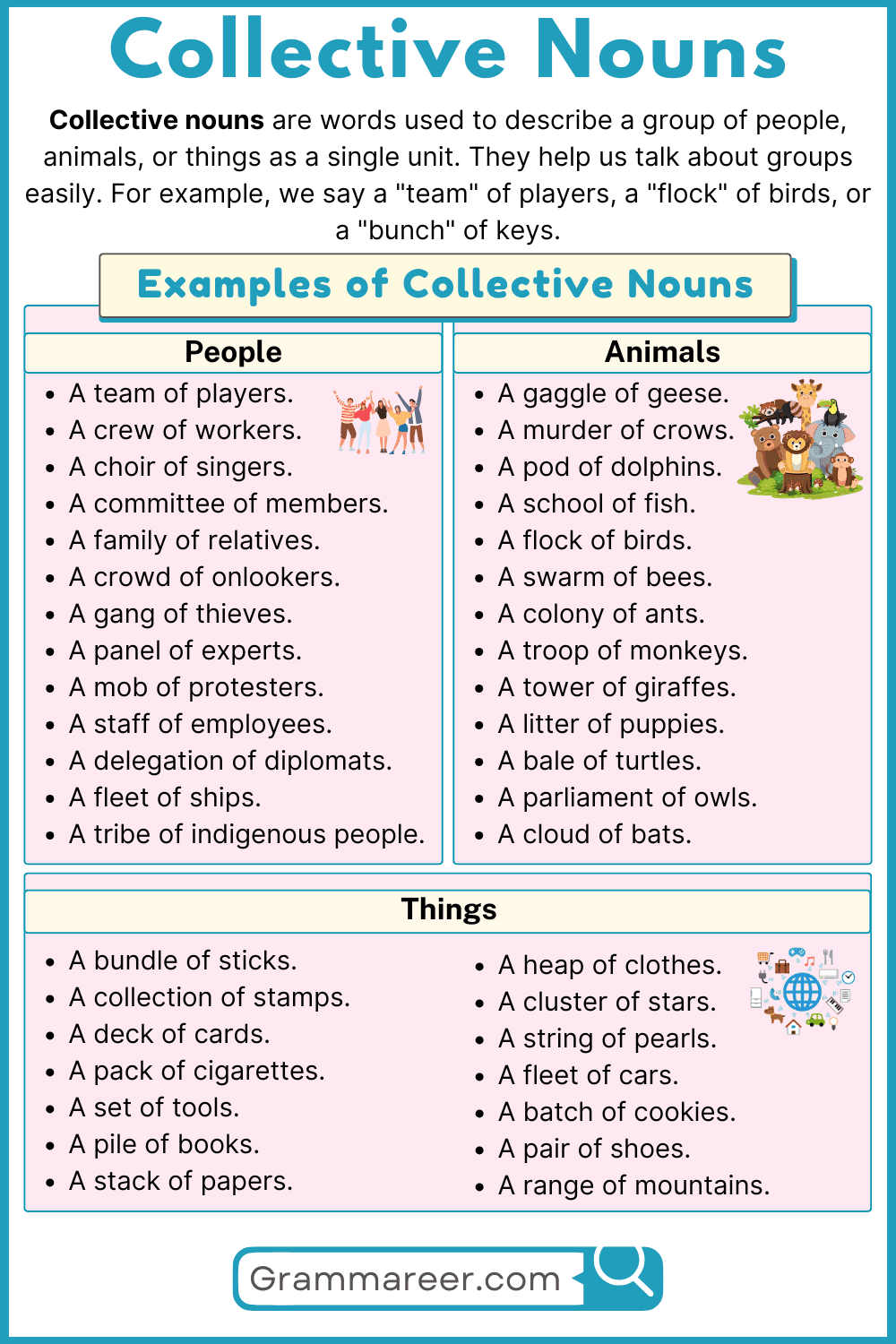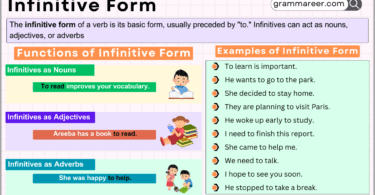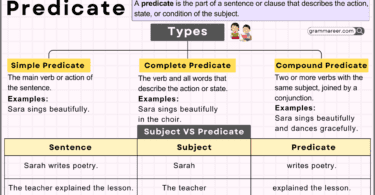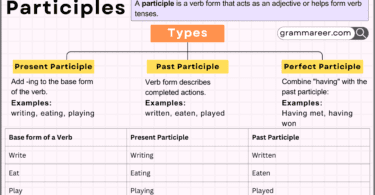Collective nouns in English are special words that describe groups of people, animals, or things as a single unit. For example, we say a “team” of players, a “flock” of birds, or a “bunch” of keys. These nouns make sentences clearer and more precise. In this post, you’ll find common collective nouns with examples to help you use them confidently in everyday English.
Table of Contents
What is a Collective Noun?
A collective noun is a word that represents a group of people, animals, or things, treated as a single unit. It helps us to refer to a set or collection with a single term, making sentences more concise and often easier to understand. For instance, instead of saying “a group of students,” we can use the collective noun class.
Examples of Collective Nouns
Here are some examples of collective nouns.
Collective Nouns for People
When referring to a group of people, several common collective nouns help describe different kinds of groups. Here are some examples:
- A team of players.
- A crew of workers.
- A choir of singers.
- A committee of members.
- A family of relatives.
- A crowd of onlookers.
- A gang of thieves.
- A panel of experts.
- A mob of protesters.
- A staff of employees.
- A delegation of diplomats.
- A tribe of indigenous people.
- A squad of police officers.
- A band of musicians.
- A fleet of ships.
- A colony of settlers.
- A faction of political activists.
- A troop of scouts.
- A cluster of friends.
- A network of professionals.
Collective Nouns for Animals
In English, animal groups have specific collective nouns. These terms make it easy to refer to groups of animals without needing to describe them individually.
- A herd of elephants.
- A pack of wolves.
- A pride of lions.
- A gaggle of geese.
- A murder of crows.
- A pod of dolphins.
- A school of fish.
- A flock of birds.
- A swarm of bees.
- A colony of ants.
- A troop of monkeys.
- A tower of giraffes.
- A litter of puppies.
- A bale of turtles.
- A parliament of owls.
- A cloud of bats.
- A drove of cattle.
- A rafter of turkeys.
- A sleuth of bears.
- A sounder of pigs.
Collective Nouns for Things
For groups of things, collective nouns are also useful. They help simplify sentences and organize ideas.
- A bundle of sticks.
- A collection of stamps.
- A deck of cards.
- A pack of cigarettes.
- A set of tools.
- A pile of books.
- A stack of papers.
- A heap of clothes.
- A cluster of stars.
- A string of pearls.
- A fleet of cars.
- A batch of cookies.
- A pair of shoes.
- A range of mountains.
- A roll of film.
- A bouquet of flowers.
- A series of events.
- A collection of coins.
- A suite of furniture.
- A library of books.
How to Use Collective Nouns in Sentences
Collective nouns are special words that refer to groups of people, animals, or things as a single unit. Understanding how to use them correctly can improve your writing and communication. Here’s a simple guide on how to use these nouns in sentences.
1. Choose the Right Collective Noun
Decide which group you want to refer to. Different collective nouns suit different contexts. For example:
- Team for a group of players.
- Flock for a group of birds.
2. Use a Singular Verb for a Unit
When the group acts together as one unit, use a singular verb. For example:
- The team is winning the game.
3. Use a Plural Verb for Individuals
If you want to emphasize the individual members within the group, use a plural verb. For example:
- The team are wearing their new uniforms.
4. Provide Clear Context
Ensure that your sentence clearly shows what the group is doing. This helps the reader understand the action. For example:
- A class of students is taking a test.
5. Add Descriptive Words
You can enhance your sentences by adding adjectives that provide more details about the group. For example:
- A large group of people gathered at the park.
Read More






